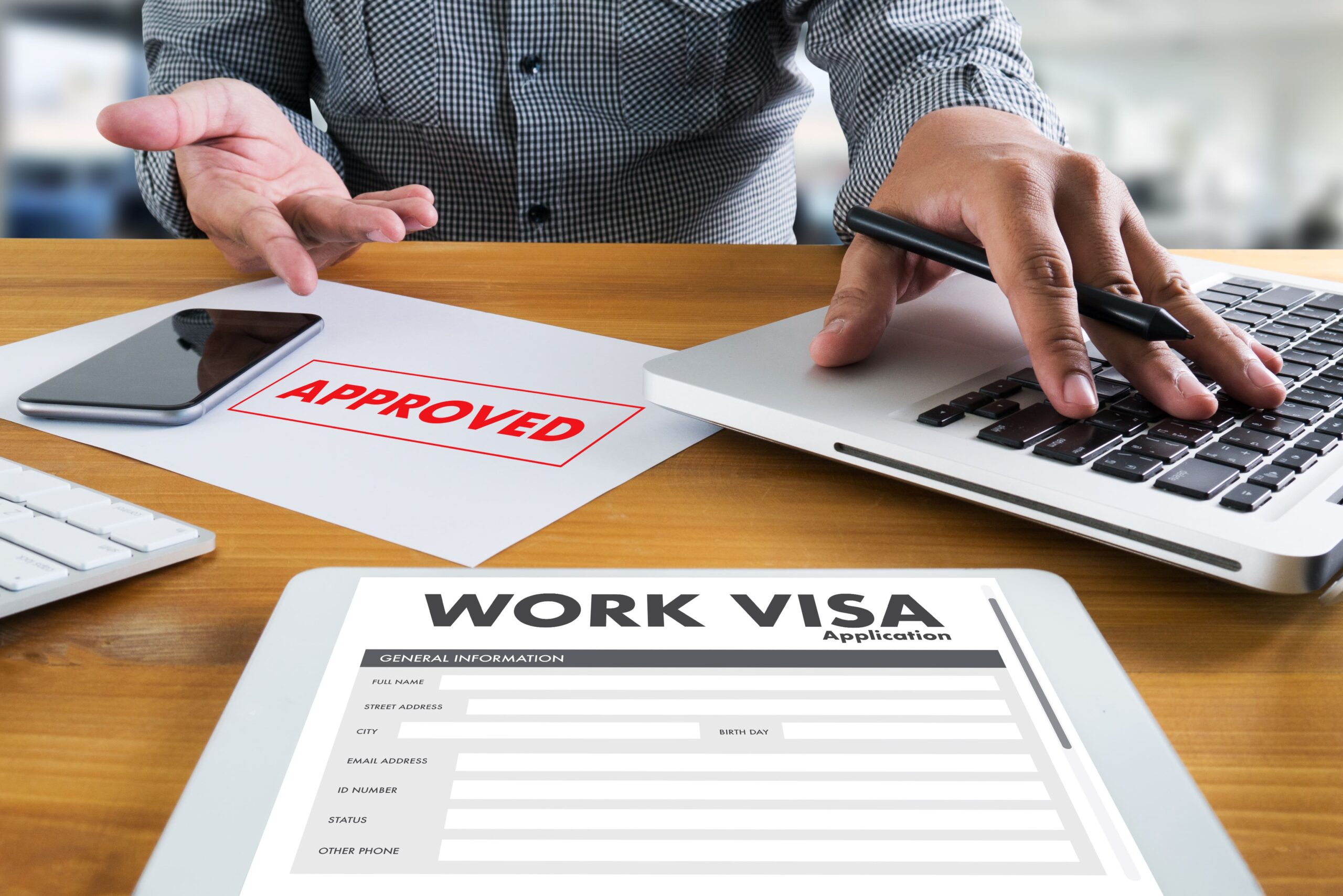
5 Ways on How to Get a Work Visa in Canada
Do you intend to come to Canada temporarily on a work visa? Then this post for you.
The information here covers:
- Available work visas for foreigners in Canada
- Temporary work visa requirements in Canada
- Things to know before paying anyone for a temporary work visa in Canada.
- The cost of getting a work visa in Canada
Is it possible to get a temporary work visa to come to Canada and work for a short period of time? YES!
There are over 100 immigration programs in Canada, but as with many other popular Canadian visas (study, Express Entry, etc.), there are requirements to meet for a work visa.
As a foreigner, you may be eligible for the following categories of ‘temporary work visas’ in Canada:
- Open work permits
- Temporary Foreign Worker Program
- Post Graduation Work Permit
- Co-op work permit
- International Experience Canada Program
There are subcategories and application requirements for each of these work visa categories. In each category, there are also general requirements to meet. This post contains direct links to the Government of Canada website where you can learn more.
As I’ve stated numerous times, there are three (3) boxes to check when deciding to immigrate to Canada: Interest, Eligibility, and Financial Ability. So, before proceeding with any of the available work visa categories, you must first confirm your eligibility and financial capacity to pursue.
ALSO READ: 9 Simple Steps to become a Permanent Resident in Canada using Express Entry
1. Open Work Permits
As stated, this position is open and does not require a job offer in Canada before applying.
However, only a limited number of applicants are eligible for an open work permit in Canada. If you are, you may be eligible;
- A spouse of a temporary resident (for example, an international student or worker). Check available details here.
- If you have applied for Permanent Residence in Canada while on a work permit and are still awaiting a decision on the PR application when your work permit is about to expire, you may apply for a Bridging Open Work Permit. Check available details here.
The two sets of people above are the only people eligible for an open work permit in Canada.
2. Temporary Foreign Worker Program (TFWP)
This appears to be the most popular work visa in Canada. It allows Canadian employers to hire foreign nationals to fill temporary labour and skill shortages when qualified Canadian citizens or permanent residents are not available for the job.
This appears to be Canada’s most popular work visa.If there are temporary labor or skill shortages in Canada and when qualified Canadian citizens or permanent residents are not available for the job, it enables employers to hire foreign nationals to fill the gap.
As previously stated, the purpose of the TFWP is to fill skill shortages. It also has various sub-categories, details is available here.
The primary requirement for the TFWP is that you must have a job offer, and your employer must also obtain a Labour Market Impact Assessment (LMIA).
Many interested applicants face difficulties in getting a job offer in Canada before applying for a work visa. In addition, before applying for a work visa, the applicant’s employer must be willing to process the LMIA. It is the employer’s responsibility to get and pay for this LMIA for you. In addition, it is unlawful to pay an employer to give you a job in Canada.
The Labour Market Impact Assessment (LMIA) will show that a foreign worker FROM OUTSIDE OF CANADA is required to fill the vacant position. It will demonstrate that no Canadian worker is available to do the job after it has been advertised for a period of time. More information is here.
If you and the employer pass this hurdle, the employer who wants to hire you as a temporary foreign worker will pay a processing fee of $1,000 CAD for the LMIA request, as well as a “privilege fee” of $100 CAD. After you have get the LMIA, you can apply for a work visa.
It is important to note that the $1,100 LMIA fee must be paid by the employer. A job offer cannot also be charged for by the employer. It is a breach of the law. So, if someone tells you to bring money to Canada for a job offer and LMIA, I can assure you that it is a complete scam.
Many people who get a work visa through the Temporary Foreign Worker Program (TFWP) get it in highly specialized professions (such as health care, technology, agriculture, and so on) or occupations where there is a high labor shortage in Canada.
Look carefully before you leap!
The following are popular visa subcategories under the Temporary Foreign Worker Program:
- Global Talent Stream (for Tech Workers) – Details here
- Foreign Agricultural Worker – Details here
- In-home caregivers – Details here
- Academic Worker Category – Details here
Click the links above to read more about the sub-programs.
3. Post-Graduation Work Permit (PGWP)
The PGWP allows international students who have completed their programs at a designated learning institution in Canada to return to work full-time after they have finished their studies. This is only for students who have studied in Canada.
The length of their work permit will be determined by the number of years they have studied. More information is available here.
Please keep in mind that not all programs/institutions qualify for a Post-Graduation Work Permit in Canada. If you want to get a PGWP, do your research and make sure the program/university is right for you.
You can find a list of eligible programs/institutions here.
4. Co-op work permit
As an international student in Canada, you will be eligible if a full-time work experience/internship is part of your study curriculum. This is distinct from the part-time work permitted under a study permit.
Co-op work permits allow you to do an internship while still studying in Canada. More information is available here.
5. International Experience Canada Program
Citizens of certain countries (mostly European countries) can apply for a separate work visa in Canada under this program. The program’s requirements and a list of eligible countries can be found here.
Where and How to look for jobs in Canada.
If you want to work in Canada, the first thing you should do is look for a job offer.
- You can look for jobs in Canada on your own or through licensed recruiters. Many genuine licensed recruiters are based in Canada and will not ask you to pay them in exchange for a job offer. Paying for a job offer is prohibited in Canada.
- Focus on employers who are ready to hire internationally, complete the LMIA, and conduct thorough due diligence. A genuine employer will also NOT ask you to pay for LMIA; this is the employer’s responsibility, and they pay it directly to Employment and Social Development Canada.
- Employers should never charge you a fee for a job offer, and they should never ask you to pay for the LMIA; this is illegal.
- Here are some resources and websites that you can use to look for work in Canada are available here.
- Check out the templates available here if you need a Canadian resume or CV.
- And if someone claims they can get you this free work visa in three months, with free accommodation, flights, and other perks, check the current processing times for work visas to manage your expectations. Check the processing times here.
Conclusion
Many fake agents advertise the Temporary Foreign Worker Program (TFWP) in particular outside of Canada. They make false promises and demand payment for jobs, work permits, LMIA, and other services. They also make promises such as free lodging, free flights, paying a deposit and the balance upon arrival in Canada, and so on. All of this is the work of (fake visa agents), and it is here that many people are scammed or abused once they arrive in Canada.
The scam became so noticeable that the government was forced to make recent changes and update the TFWP program requirements. More information is available here. You can also find useful information on how to work in Canada on the Government of Canada’s website here.
So, if anyone promises to get you a temporary work visa in Canada and you do not fit into any of the categories listed above, please ask them carefully and do your homework before handing over your hard-earned money.
I hope this is useful to someone. And if you want us to partake in your Japa success story contact us now.
ALSO READ: How to Get Permanent Residence through Atlantic Immigration Pilot Program



